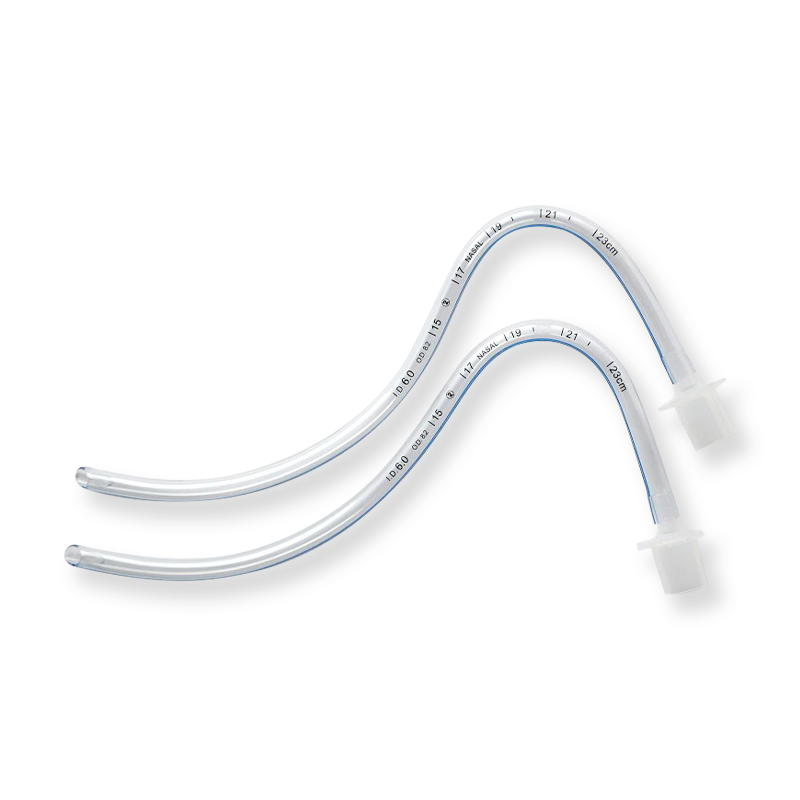TEl: +86-13148388090
Fax:+86-571-88616515
Cuffed and Uncuffed Endotracheal Tubes
Author: admin / 2024-09-27For those who are acquainted with endotracheal tubes, there might be a desire to see some elaboration on cuffed and uncuffed endotracheal tubes. In this article we would like to share with you descriptions of these two types of endotracheal tubes.
As we know, an endotracheal tube is a flexible plastic tube that is inserted into the trachea (see definition below) through the mouth or nose. It can be used for maintaining airway patency, and is also useful to facilitate mechanical ventilation (see definition below).
Notes:
1) The trachea is the tube in humans extending from the larynx to the bronchi. It is the principal passage for conveying air to and from the lungs; it is also called the windpipe.
2) Mechanical ventilation: If the patient cannot breathe on their own, he/she will need to use a ventilator. The ventilator is a machine that moves breathable air in and out of the lungs.
The insertion of an endotracheal tube
Cuffed endotracheal tube
1) What is a cuffed endotracheal tube?
Cuffed endotracheal tube has an inflatable cuff near the end. The cuff is an inflatable balloon around the end of the tube. Made from silicone or rubber, the cuff, when inflated, presses tightly against the inner wall of the trachea, creating a seal that prevents leakage of air and other substances.
2) Applications where the cuffed endotracheal tube is used
A. During mechanical ventilation where the patient is ventilated with a high airway pressure, the cuffed endotracheal tube is the preferred type over the uncuffed type.
B. If the patient requires long period of ventilation, this is also the preferred type. The reason is that the cuff when inflated provides an effective seal and stability.
C. During laparoscopic surgery and cardiothoracic surgery, the seal between the trachea and tube is supposed to be high and effective, therefore cuffed endotracheal tube is preferred in both procedures. Besides, the use of cuffed endotracheal tube provides better benefits for monitoring respiratory mechanics (you can monitor it more accurately). Moreover, it reduces the loss of volatile drugs, thus helping to lower anesthetic costs.
3) Disadvantages of the Cuffed endotracheal tube
As you can see from section about the application of cuffed type of tube, this type’s advantages are apparent. So here we discuss its disadvantages.
A. Cuffed endotracheal tube has a relatively complicated structure. The insertion and removal of it take certain level of skill.
B. You need to be able to precisely control the extent to which the cuff is inflated otherwise over-inflation will cause damage to the tracheal wall.
C. If used in children under 8 there is a significant risk of damaging the laryngeal part or the tracheal mucosa.

Uncuffed endotracheal tube
1) What is an Uncuffed endotracheal tube?
An uncuffed endotracheal tube does not have a cuff. Its tube shape and diameter adapt to the trachea and is thus able to create a seal between the tube and the trachea. Due to its structural simplicity, the uncuffed endotracheal tube is easier to insert and remove.
2) Applications where uncuffed endotracheal tube is used
A. Infants and young children, especially those under the age of 8, traditionally have smaller and more delicate airways that can be easily damaged by a cuff. This is reason for use of this type of endotracheal tube. Besides, their cricoid cartilage often acts as a natural seal, making an artificial cuff unnecessary.
B. It is used in procedures or situations where intubation is expected to be brief. It is also used in situations where mechanical ventilation pressures are not high.
C. Uncuffed endotracheal tube is suitable for emergency tracheal intubation, for instance, we use an uncuffed endotracheal tube in emergency situations such as cardiopulmonary resuscitation because it is a convenient tool easier to insert and remove.
3) Disadvantages of uncuffed endotracheal tube
A. There may not be an effective seal between the tube and the trachea, resulting in leakage.
B. If the patient needs to undergo mechanical ventilation for a long period or if he/she needs to be ventilated with high airway pressure, the uncuffed endotracheal tube is not the suitable tube to be used.
To give you a vivid idea of these two different types of endotracheal tubes, please refer to the following image. If you are interested in specifications and other information about them, you can visit website: www.bevermedical.com
Cuffed and uncuffed endotracheal tubes from Bever Medical Devices

Recent trends
People are becoming more skillful in handling the cuff to avoid its negative effects. The cuff design is improving. The improved design of the cuffed tube minimizes pressure on the tracheal wall while providing an effective seal. So there is an increasing use of cuffed tubes in Pediatrics.
Important notes
As you can see from the above, cuffed and uncuffed endotracheal tubes have their respective advantages and disadvantages. They are selected to be used in situations where they are suitable, based on factors such as conditions of the patient, needs of surgery or treatment, experience and skills of the medical personnel. The applications of these two types of endotracheal tubes will be optimized and enhanced as medical technologies advance and research intensifies.


